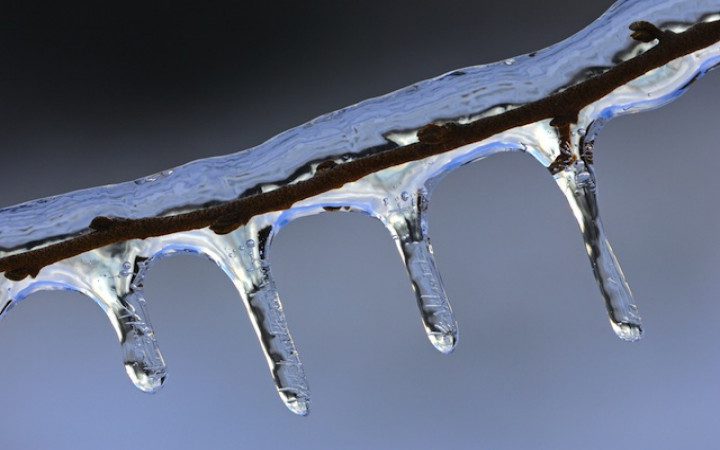As we make it through the winter, meteorologists in many parts of the country are predicting all sorts of cold-weather precipitation: snow, sleet, freezing rain. But what's the difference?
All precipitation falls through the atmosphere on its way to the Earth's surface. Imagine a drop or flake falling through a long tube that contains the air between the clouds and the Earth.
The air inside the imaginary tube is the atmosphere. Differences in temperatures in different parts of the atmosphere account for the differences we see between snow, sleet, and freezing rain.
The liquid precipitation that falls to Earth's surface is rain. Rain can begin as snow, but by the time it reaches the Earth's surface, it has melted because the temperature closer to Earth is warmer.
If you've ever thought it strange that it's raining when the temperature outside is below freezing, it's probably because the temperature higher up in the atmosphere is still above freezing.
Snow forms in clouds at temperatures below freezing. As snow falls through the atmosphere, the air remains at least 32° F or colder. In order for a snowflake to reach Earth, it must remain frozen from cloud to surface.
But can it be too cold to snow? Sometimes! The colder it gets, the less water vapor there will be in the air…and less water vapor in the air means less chance of snow.
Sleet occurs when a snowflake falls through the atmosphere and warms up a bit before refreezing. The snowflake begins its journey frozen. As it passes through a thin layer of warm air in the atmosphere, it melts a bit.
It then re-enters another pocket of cold air before reaching the surface. The snowflake refreezes and becomes an ice pellet we call sleet. Sleet typically bounces when it hits the ground.
Freezing rain follows a similar journey as sleet, but instead of a thin pocket of warm air, freezing rain falls through a larger pocket of warm air in the middle of its journey. Freezing rain begins as snow, but when it reaches the warm pocket, it melts and becomes rain.
Before hitting the ground, it passes through a very shallow pocket of cold air, which cools it some but not enough to turn it into sleet. Instead, when the water droplet reaches the surface of the Earth and comes in contact with cold objects (such as cars, streets, or trees), it freezes immediately and turns into ice.




